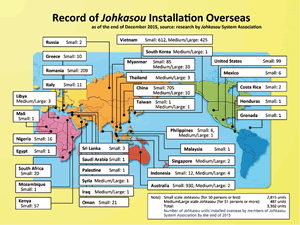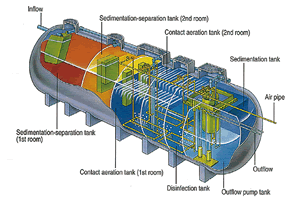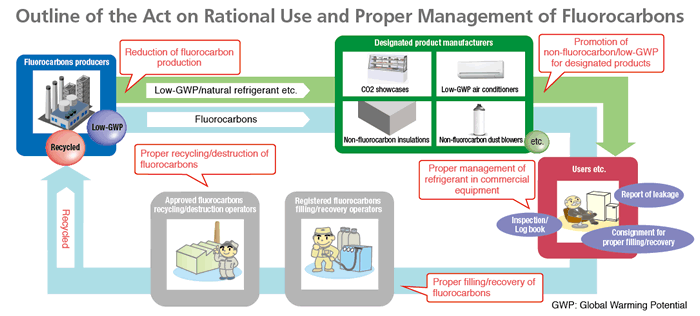Current Topics
The 4th International Workshop on Decentralized Domestic Wastewater Treatment in Asia
JAKARTA, INDONESIA, 27th-28th SEPTEMBER, 2016
Ministry of the Environment (MOE) organized the "4th International Workshop on Decentralized Wastewater Treatment in Asia" in the Special Capital Region of Jakarta, Republic of Indonesia, on 27 and 28 September, 2016. This workshop has been held since 2013 to share information and experience of participating countries with regard to decentralized wastewater treatment systems such as the Johkasou (on-site wastewater treatment) system and septic tanks, as well as to build a network of stakeholders of each country and obtain a common view about issues to be addressed and directions for the future. A total of 34 persons participated in this workshop: 13 Indonesian officials in charge of environmental administration, 6 from local companies, etc., 3 administrators from Thailand, Malaysia and Vietnam, and 12 from Japan including officials of MOE as well as JICA and other concerned institutions.
In the session, the participants discussed the framework of regulation, management and supervision concerning decentralized wastewater treatment and successful cases of sludge management, etc., and MOE introduced Japan's experience on the importance of a comprehensive framework such as the Johkasou Act.
In recent years, the number of Johkasous exported from Japan to overseas including Asia has been rapidly increasing, while prevention of the spread of inferior products, training of maintenance and management technicians and construction of a sludge treatment system have become great challenges. We will continue our efforts to disseminate information so that we can contribute to sanitation improvements and conservation of the water environment in Asia, as well as create new business opportunities for the domestic industry.
More Information:
Workshop under G7 Alliance on Resource Efficiency, "Resource Efficiency and Low-Carbon Society: Identifying Opportunities and Implications"
Participants from governments of G7 members, India and Indonesia, business and research institutes reaffirmed the need for further work for resource efficiency and lowcarbon society.

Delegations discussing in the workshop
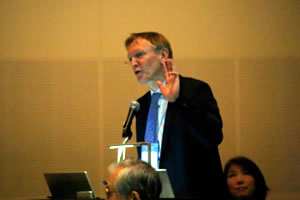
Janez Potočnik, IRP co-chair and former EU commissioner
Resource efficiency was featured prominently in the Leader's Declaration of G7 Elmau Summit in June 2015, leading to the establishment of G7 Alliance on Resource Efficiency, which aims at sharing best practices among stakeholders.
Under Japan's G7 presidency, Ministry of the Environment co-organized the workshop "Resource Efficiency and Low-Carbon Society: Identifying Opportunities and Implications" under G7 Alliance on Resource Efficiency, with UNUIAS and IGES on 12 and 13 December in 2016.
At the global level, the consumption of natural resources and production of waste have increased to a greater scale than ever before, and it is even expected to grow significantly while our international community adopted Sustainable Development Goals (SDGs) and the Paris Agreement. The urgent challenge for us is to assess whether the current measures on resource efficiency satisfy the consistency with SDGs and a decarbonized society. "Toyama Framework on Material Cycles", which was adopted at G7 Toyama Environmental Ministers' Meeting in May 2016, also calls for integrating resource efficiency and the 3Rs, and climate change.
The workshop identified the areas to be discussed further as
- Evaluating greenhouse gas (GHG) reduction and its potential by enhancing resource efficiency (including demand reduction, weight saving, substitution, lifetime extension, and recycling) over the lifecycle of materials, including extraction, production, transport, use, and disposal
- Specifying impacts of deployment of major low-carbon technologies (e.g. solar power, wind turbines, and electric vehicle) in resource use (e.g. steel and copper) and waste management, and countermeasures to mitigate negative impacts
- Implementation of a waste management hierarchy and promotion of renewable materials (e.g. bioplastic and timber) that integrate resource efficiency and low-carbonization
Co-chairs' summary of the workshop and presentations in the public symposium that was held subsequently can be downloaded in the IGES website.
Amendment to Montreal Protocol to phase down HFCs (Kigali Amendment) and Japan's Response
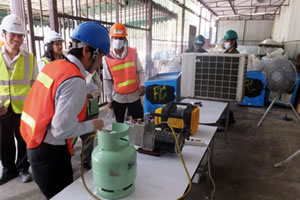
Recovery of fluorocarbons from air conditioners
Fluorocarbons are artificial substances that have characteristics such as high chemical stability and low toxicity. Invented in the 1920s, they were used in a wide range of applications including refrigerants for refrigerators and air conditioners, foaming agents for thermal insulation materials for construction materials and spray propellants. However, it turned out in the 1970s that they destroy the ozone layer.
Therefore, the Montreal Protocol on substances that deplete the ozone layer was adopted in 1987, and a stepwise reduction in the production and consumption of ozone layer depleting substances such as chlorofluorocarbons (CFCs) and hydrochlorofluorocarbons (HCFCs) was promoted internationally by converting those substances mainly to hydrofluorocarbons (HFCs). As a result, although the ozone hole over the Antarctic was rapidly expanding from the 1980s to the 1990s, the long-term trend of expansion has not been seen recently.
On the other hand, HFCs are greenhouse gases with high greenhouse effect. Due to the rapid increase in their emission in recent years, HFCs were added to the substances subject to the Protocol at the meeting of the parties to the Protocol, held in Kigali, Rwanda in October 2016, and the parties agreed that developed countries shall phase down HFCs by 85% by 2036, and developing countries shall phase down by 80% or more by around 2045.
Japan is promoting advanced efforts to minimize emissions throughout the lifecycle of fluorocarbons ahead of the rest of the world, yet new restrictions on the production of HFCs are needed based on the Kigali Amendment. In addition, there are also issues such as the recovery rate of fluorocarbons at disposal remains at around 30% for more than 10 years. In order to find solutions to deal with these issues, expert meetings have been held since the end of 2016. We are planning to take necessary measures as soon as possible before 1 January, 2019 when the Amendment to the Protocol will enter into force.



